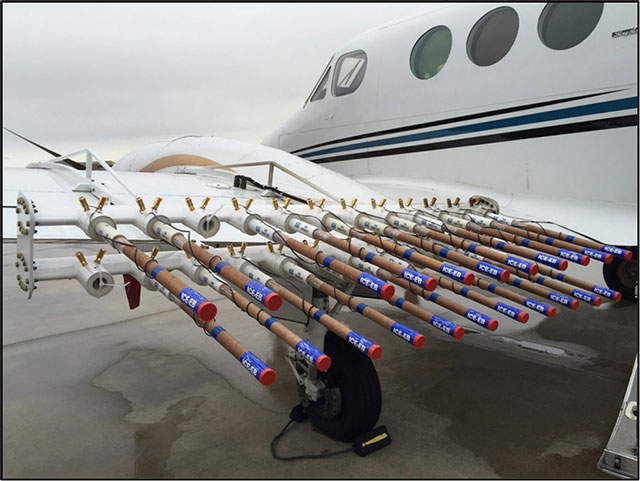Understanding the Science of Weather Modification
Published: November 27th, 2024
For decades, weather modification technology has quietly helped communities fight drought, invigorate agricultural production, and enhance public safety. In recent years, this technology has become the subject of fear-inducing myths and conspiracy theories which suggest that governments and other powerful entities can intricately manipulate the weather on a large scale, and do so with malicious intentions. The truth? Weather modification is a strictly-regulated tool with limited, yet valuable, capabilities which have worked to sustain the livelihoods of communities and ecosystems across the planet. Here’s the science behind weather modification, why this tool matters, and why the conspiracies surrounding this technology do not hold water.
Weather Modification Explained
According to the United States´ Weather Modification Act of 1976, “weather modification” refers to “[any] activity performed with the intention of producing artificial changes in the composition, behavior, or dynamics of the atmosphere,” (1). These activities can include but are not limited to the seeding or dispersing of any substances into clouds or fog, using fires or sources of heat to influence convection, and modifying the characteristics of land or water surfaces with chemicals or other materials. Cloud seeding, perhaps the most widely known weather modification technique, began in the U.S. when researchers at General Electric tested the interaction between frozen CO2 pellets and a lab-grown, supercooled “cloud” (2,3) These conditions provided a surface where the supercooled water could condense, freeze, and become heavy enough to precipitate. This surface, otherwise known as cloud condensation nuclei, is crucial in the formation of clouds and precipitation because water molecules cannot effectively bond together to become droplets without a nucleus. These nuclei exist naturally in the form of particulate matter such as smoke and ash, or tiny soil particles and pollen carried by the wind, to name a few.

Today, cloud seeding activities typically use frozen CO2, silver iodide or lead iodide to introduce nuclei into the atmosphere and promote precipitation for various reasons. Cloud seeding is particularly helpful for generating higher amounts of snowfall within mountain ranges to increase snowpack and subsequently the streamflow of critical watersheds, like the efforts undertaken within the Sierra Nevada (4). Cloud seeding has been applied to agriculture as a method to increase and protect crop yields by amplifying rainfall to supplement irrigation and decrease destructive hail events through the reduction of hail sizes (5). It’s important to note that cloud seeding does not create weather systems; it requires pre-existing clouds in the atmosphere and only promotes or modifies natural precipitation processes.
Weather Modification and Conspiracy
Despite the transparent science, weather modification has attracted a fleet of conspiracies that claim that manipulated weather has become a weapon against society. Some of the most common myths suggest that cloud seeding is used to create natural disasters, control populations, or even trigger large-scale climate changes. But in the field and in the literature, cloud seeding has proven to be modest in its reach and impact; cloud seeding requires specific pre-existing atmospheric conditions to work effectively, and even then, it only increases precipitation by about 10-15% in ideal circumstances (5). Additionally, weather modification projects have heavy regulations and require public documentation to perform. While the National Oceanic and Atmospheric Administration (NOAA) does not perform, fund, or directly oversee any weather modification projects, the Weather Modification Reporting Act of 1972 requires anyone conducting weather modification activity within the U.S. and its territories to report this activity to the Secretary of Commerce. NOAA then compiles and publishes these reports on their public Weather Modification website (6).

The idea that organizations could use weather modification technology to produce large-scale events like hurricanes, winter storms, or even volcanic eruptions is entirely unfounded— no current technology can manipulate earth systems in such a widespread manner or influence complex natural processes like volcanic or tectonic activity. Weather modification, including cloud seeding, is far from being the weaponized science that conspiracy theories describe, but rather a practical and carefully managed tool that benefits communities around the world.

